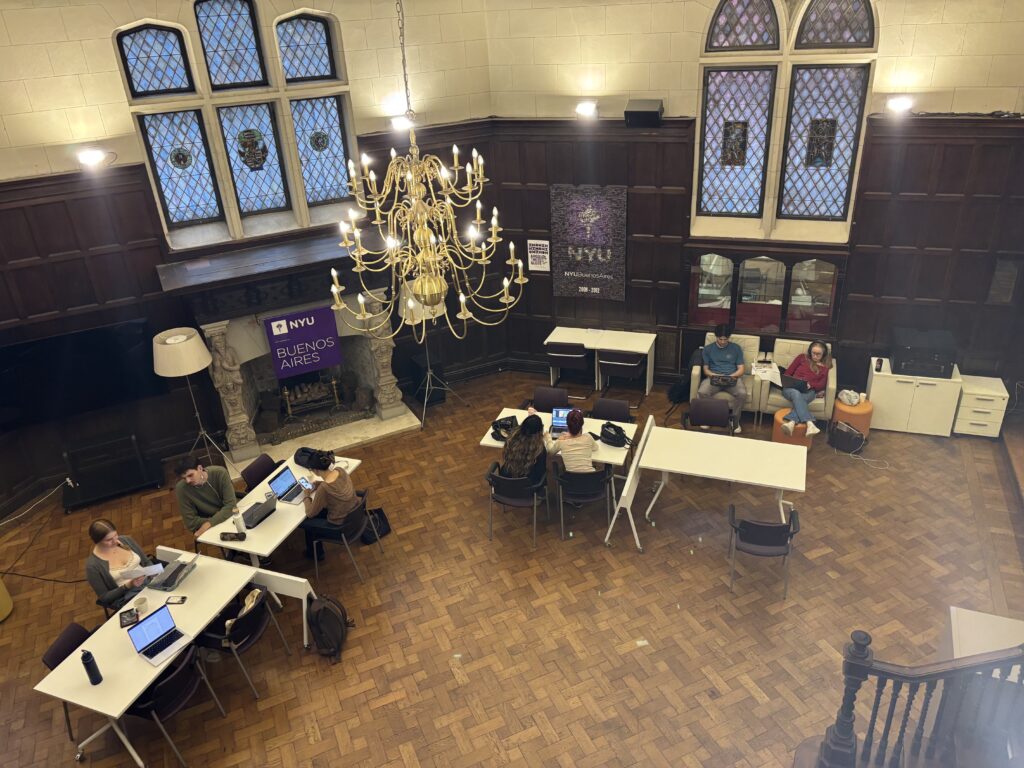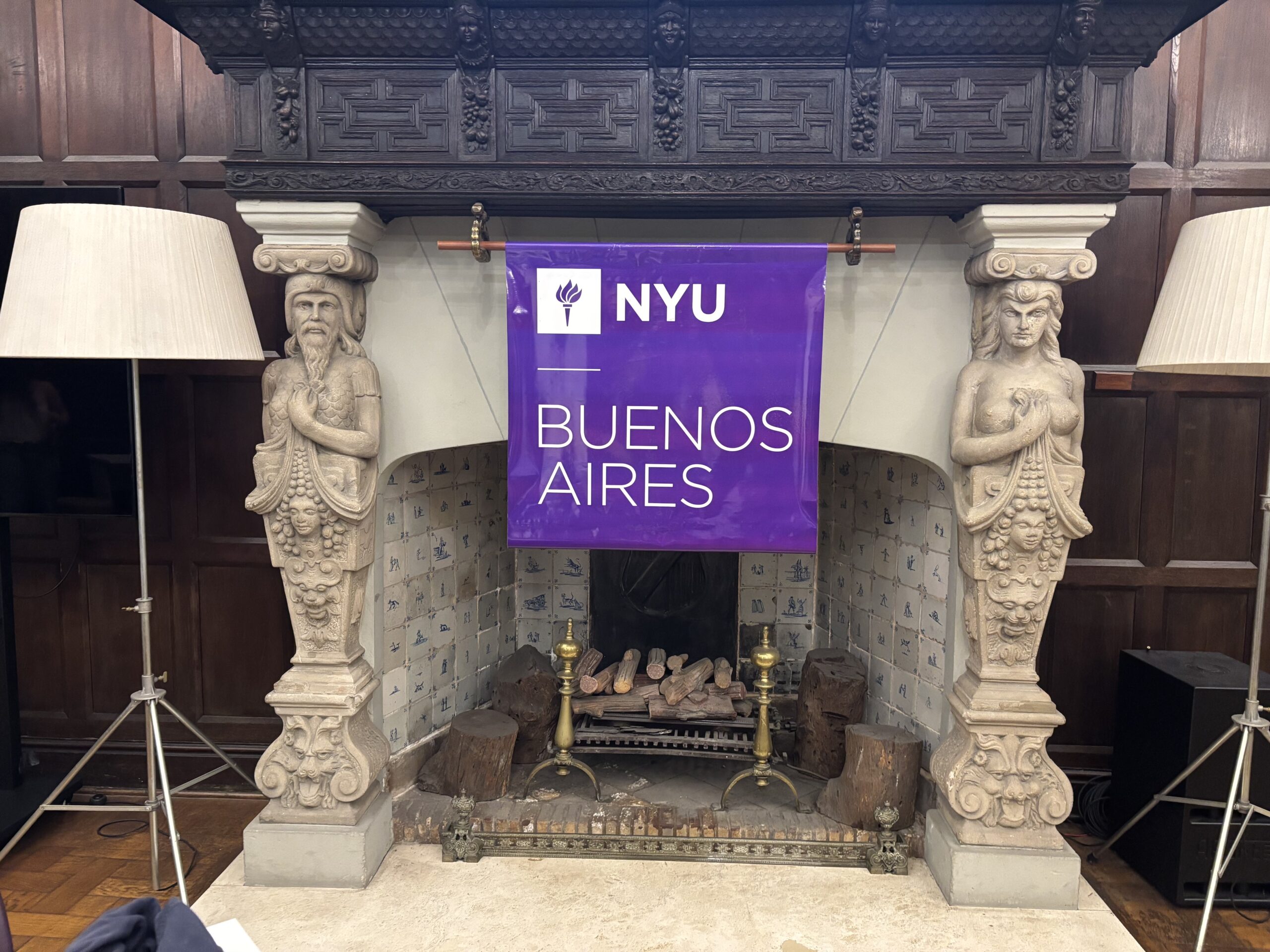After two hours of an intensive elementary Spanish class, I walked down the staircase with a yerba mate and thermos in hand at 10:50 a.m. Scattered bits of conversation from the 50 fellow students filled an open foyer lined with tall stained-glass windows, antiquated wooden floors and a fireplace bordered by carved stone sculptures. Anchorena 1314, a “Tudor” brick building with cream-colored stone decor outside, became a home away from home and the cohort a tight-knit family for my spring semester in Buenos Aires.
The NYU study away site, which opened in 2008, is not usually high up on students’ list of places to go for their semester abroad. The colloquially known “big three” of London, Madrid and Paris instead regularly popped up in conversations about study-abroad.
Before students arrived in Buenos Aires, the NYU administration sent out a survey asking for reasons why they chose this site in Latin America. According to NYU Buenos Aires site director Anna-Kazumi Stahl, the top 10 percent wanted to improve their Spanish — “a no-brainer.”
“The other overwhelming majority is people who want to challenge themselves,” said Stahl. “They want to come to a place where they don’t know anything and say, ‘I’m just going to have this life experience now, while I can.’ That appetite, that will, to be in there with something that is uncomfortable and mysterious, is the draw.”
As Stahl put it, Buenos Aires is “a little off the beaten path,” shown by the number of students who choose to study there. 30 people came for the Fall 2024 semester, with seven Global Liberal Studies students staying for an extra semester to join up with the 50 students for the Spring 2025 semester. It’s a small number compared to the “hundreds” of students London and Madrid receive each semester.
“One of the main things here is the community,” said Paula Di Marzo, assistant director for student life at NYU Buenos Aires. “We’re a very small community and we are the only site with homestays, where students get to immerse themselves in the Argentine culture with a local family. I think it’s one of the main draws.”

Before this semester, I’ve associated Argentina with two things: a brilliant national soccer team that is defending world champions, and the country Robin Scherbatsky escaped to after her breakup with Ted Mosby in “How I Met Your Mother” to “find herself.” To be honest, I’d chosen Argentina for these two associations and because I grew up in two places — Shanghai for 10 years and followed by seven years in my home in Singapore. Now, having lived in New York for the better part of three years, I saw Buenos Aires as an opportunity to live on a new continent while learning a new language and a new culture that was worlds apart from what I had known my entire life.
“It’s the only NYU location in Latin America, so I think it kind of engages anyone who is interested in this region,” said Anne Sowards, a NYU Global Liberal Studies junior who was in Buenos Aires for the academic year. “And I feel like there’s a logistical factor — parents aren’t too concerned about their kids going to Buenos Aires compared to other campuses.”
A common sentiment I heard before living in Buenos Aires was that it would be “not safe” and a “developing country” would be hard to live in. I heard phones were stolen often and prices for items can change as fast as the next week. Prices have risen “20%” since January, students have found.
“It shows you the reality of the world and how it is to live in most places that aren’t the so-called West, and I feel like that’s the most fascinating part,” said Ingus Dimiševskis, an NYU-Abu Dhabi sophomore. “I’ve found it to be like any other big city in the world. Public transport is accessible and most people are really friendly, even though the majority of Argentines don’t speak English. It’s safe as long as you’re smart about not having your phone out on a busy street, for example.”
The campus’s student-life team makes an effort to put the preconceived worries to bed during orientation, providing students with packets full of information on the best places to change currencies in the informal “blue-dollar rate” — a better rate for U.S. dollars than what Argentine banks will give a tourist — and the best SIM card plans for students to get based on how long they are here for.
“I think that we manage students’ expectations and tell them what they will find,” said Di Marzo. “We always try to balance the practical information and why coming to Buenos Aires is a good idea.”
While Europe might be easy to travel around with cheap RyanAir prices and a trans-national railway system, students like Dimiševskis feel there’s more to see in South America.
“I knew that coming from Latvia, it was going to be one of the most drastically different societies I could possibly be living and studying in,” said Dimiševskis. “That’s why I’m here, because I believed it was going to offer me the biggest cultural immersion out of any of the NYU global sites.”
After travelling to 10 destinations from Cusco, Peru to Santiago, Chile and down to Ushuaia, Argentina — the southern-most town in the world — Dimiševskis feels “well-travelled and culturally immersed.” He felt that “once you’ve seen Paris, Rome, you’ve seen the big European cities.”
“You can travel around Latin America, and every city you go to is going to be drastically different from each other and it’s going to be an uncomfortable environment, especially if you’re from the USA, Canada or Western Europe,” said Dimiševskis.
